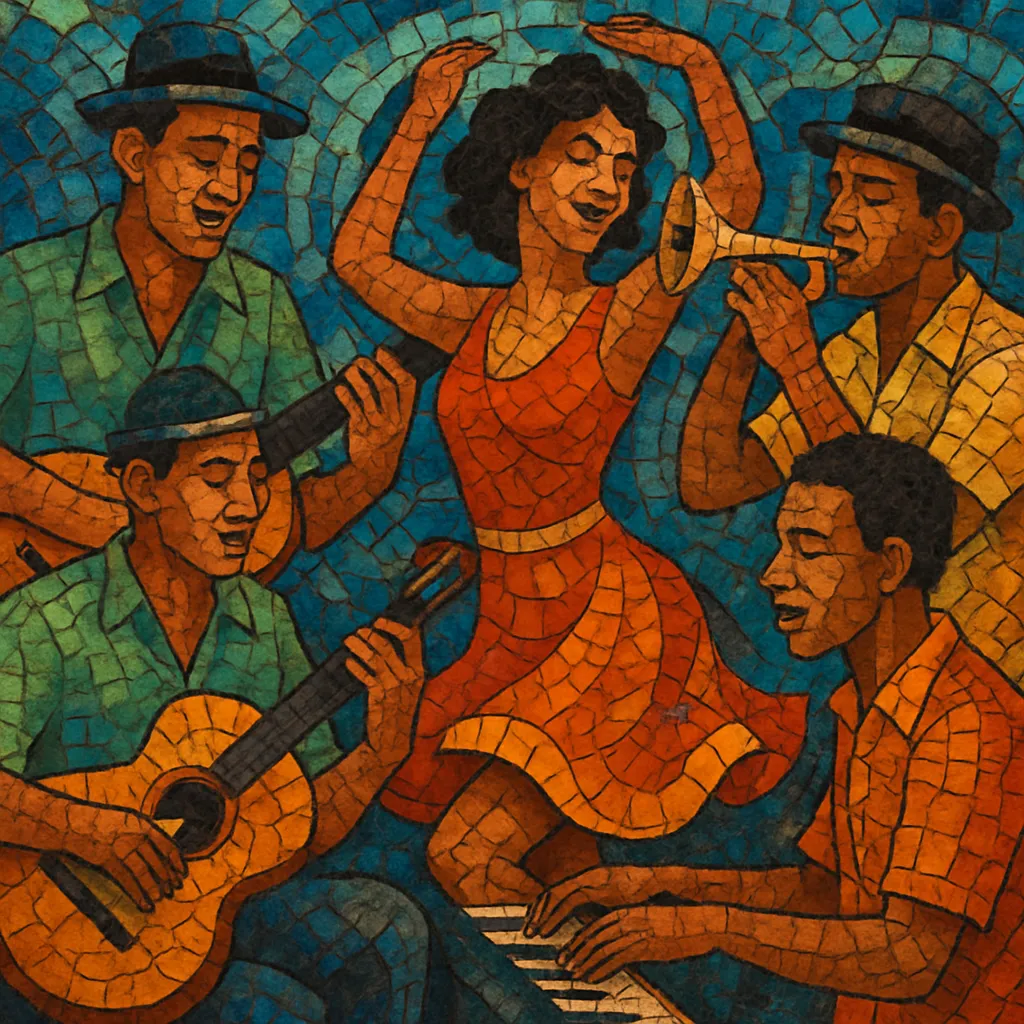Sambalanço is a Brazilian dance-oriented offshoot of samba that blends the rhythmic drive of samba with the harmonic sophistication and improvisational language of jazz. It favors lively, swinging grooves, crisp arrangements, and catchy melodic hooks designed for the dance floor.
Emerging in the 1960s, especially in the nightclub scenes of São Paulo and Rio de Janeiro, the style sits between bossa nova’s cool subtlety and samba-jazz’s virtuosity. Piano–bass–drums trios and compact horn sections often play syncopated samba patterns with walking or syncopated bass lines, extended jazz chords, and occasional solos, all supporting vocals that celebrate urban life, love, and the sheer joy of dancing.
Sambalanço arose in Brazil during the early to mid 1960s as dance clubs and boates looked for a sound that preserved samba’s percussive heartbeat while embracing jazz harmony and swing. The term “balanço” (groove/swing) signaled music that felt both sophisticated and undeniably danceable, bridging bossa nova’s cool aesthetic with a more extroverted, club-ready energy.
In São Paulo and Rio de Janeiro, tight piano–bass–drums trios and small horn groups sharpened arrangements around syncopated samba patterns, II–V–I progressions, and bright melodic hooks. Records and live sets featured concise improvisations, call-and-response vocals, and breakdowns that highlighted rhythmic “paradinhas” (stops) for dancers. The style ran parallel to, and in dialogue with, samba-jazz and bossa nova, but prioritized a punchier, dance-floor stance.
Groups like Sambalanço Trio, Zimbo Trio, Tamba Trio, Milton Banana Trio, and J.T. Meirelles e Os Copa 5 helped codify the sound, while charismatic vocalists such as Wilson Simonal and Jorge Ben (Ben Jor) brought it wider popularity. Clubs, radio programs, and TV variety shows of the era amplified the style’s urban, modern image.
By the late 1960s and early 1970s, sambalanço’s groove-forward blend fed into later strands such as samba-rock, samba soul, and broader MPB aesthetics. Its crisp arrangements, jazz-inflected harmony, and dancer-friendly momentum continue to inspire Brazilian jazz ensembles and contemporary revivals, preserving sambalanço as a vibrant chapter in Brazil’s mid-century musical innovation.


